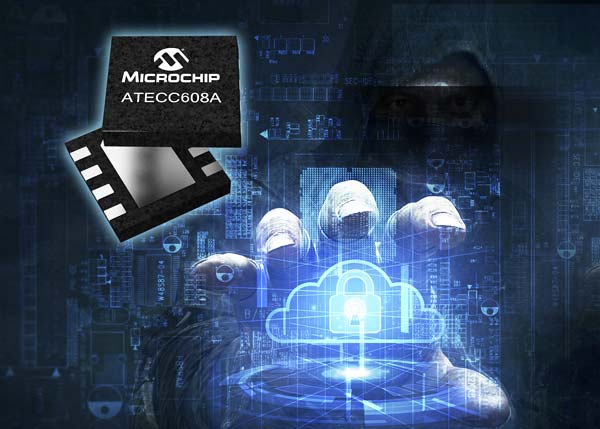 Microchip announces the ATECC608A CryptoAuthentication™ device, a secure element that allows developers to add hardware-based security to their designs, and a Security Design Partner Programme for connecting developers with third-party partners that can enhance and expedite secure designs. The combination of proven hardware security solutions and an unprecedented level of partnership helps to protect against security threats ranging from remote cyber-attacks to the creation of counterfeit products. These threats are wide-spread and affect all industries and can translate into substantial losses in recovery costs, service revenue and perhaps, most significantly, in brand equity. Implementing robust security into new and existing designs to protect Intellectual Property (IP) and enable trusted authentication of connected devices is critical.
Microchip announces the ATECC608A CryptoAuthentication™ device, a secure element that allows developers to add hardware-based security to their designs, and a Security Design Partner Programme for connecting developers with third-party partners that can enhance and expedite secure designs. The combination of proven hardware security solutions and an unprecedented level of partnership helps to protect against security threats ranging from remote cyber-attacks to the creation of counterfeit products. These threats are wide-spread and affect all industries and can translate into substantial losses in recovery costs, service revenue and perhaps, most significantly, in brand equity. Implementing robust security into new and existing designs to protect Intellectual Property (IP) and enable trusted authentication of connected devices is critical.
The foundation of secured communication is the ability to create, protect and authenticate a device’s unique and trusted identity. By keeping a device’s private keys isolated from the system in a secured area, coupled with its industry-leading cryptography practices, the ATECC608A provides a high level of security that can be used in nearly any type of design. Primary features of the ATECC608A include:
- Best-in-class key generation: The Federal Information Processing Standard (FIPS)-compliant Random Number Generator (RNG) generates unique keys compliant with the latest requirements from the National Institute of Standards and Technology (NIST), providing an easier path to a whole-system FIPS certification.
- Boot validation capabilities for small systems: New commands facilitate the signature validation and digest computation of the host microcontroller (MCU) firmware for systems with small MCUs, such as an ARM® Cortex®-M0+, as well as for more robust embedded systems.
- Trusted authentication for LoRa nodes: The AES-128 engine also makes security deployments for LoRa infrastructures possible by enabling authentication of trusted nodes within a network.
- Fast cryptography processing: The hardware-based integrated Elliptical Curve Cryptography (ECC) algorithms create smaller keys and establish a certificate-based root of trust more quickly and securely than other implementation approaches that rely on legacy methods.
- Tamper-resistant protections: Anti-tampering techniques protect keys from physical attacks and attempted intrusions after deployment. These techniques allow the system to preserve a secured and trusted identity.
- Trusted in-manufacturing provisioning: Companies can use Microchip’s secured manufacturing facilities to safely provision their keys and certificates, eliminating the risk of exposure during manufacturing.
In addition to providing hardware security solutions, customers have access to Microchip’s Security Design Partner Programme. These industry-leading companies, including Amazon Web Services (AWS) and Google Cloud Platform, provide complementary cloud-driven security models and infrastructure.
Other partners are well-versed in implementing Microchip’s security devices and libraries. Whether designers are looking to secure an Internet of Things (IoT) application or add authentication capabilities for consumables, such as cartridges, or accessories, the expertise of the Security Design Partners can reduce both development cost and time to market.
For rapid prototyping of secure solutions designers can use the new CryptoAuth Xplained Pro evaluation and development kit in addition to the ATCryptoAuth-XPRO-B add-on board, priced at $10, which is compatible with any Microchip Xplained or XplainedPro evaluation board.
For more information, visit Microchip’s Web site at: www.microchip.com/design-centers/security-ics/cryptoauthentication/overview
Microchip Technology | www.microchip.com



